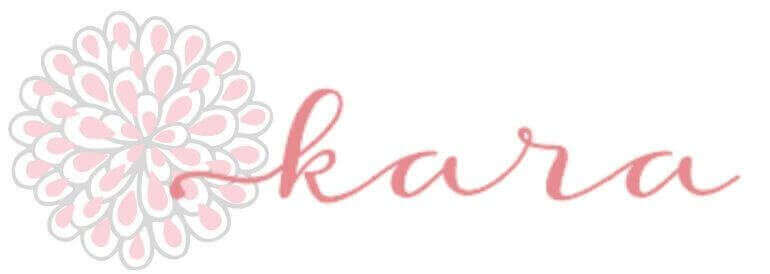I have always loved the feminine and romantic look of lace! In the new release, Vintage Modern Crochet: Classic Crochet Lace Techniques for Contemporary Style, best-selling author Robyn Chachula captures this vintage appeal while also offering trendy one-of-a-kind pieces for your wardrobe!
The book explores five classic crochet lace techniques and reinvents them in beautiful, compelling ways with wearable and on-trend items garments and accessories. You will love the featured tunics, cowls, shawls, pullovers, and even a crochet dress.

In fact, the publishers are so sure you will love it, that they have offered to share the full pattern for one of my favorite designs … O’Hara Hat! I hope you love it as much as I do!
O’Hara Hat Crochet Pattern

Click here to reference Crochet Abbreviations.
Add this pattern to your Ravelry library.
Excerpted from Vintage Modern Crochet Copyright © 2016 by Robyn Chachula and published by F+W Media, Inc. Used by permission of the publisher. All rights reserved. Photography by Donald Scott.
O’Hara Hat
REBECCA VELASQUEZ
Typically, when you think of the pineapple motif, a doily or perhaps even a shawl comes to mind. I knew I wanted to try something a bit different; something fun and modern; something wearable by many women with many different styles. A hat!
FINISHED MEASUREMENTS
Fits average woman’s head. Hat band circumference = 19″ (48.5 cm).
YARN
DK Weight (#4 Medium).
Shown here: Berroco Vintage DK (50% acrylic 40% wool, 10% nylon; 288 yd [263 m]/3.5 oz [100 g]): #2192 Chana Dal, 1 hank.
HOOK
Sizes G-6 (4.25 mm) and H-8 (5.00 mm). Adjust hook size if necessary to obtain the correct gauge.
NOTIONS
Locking stitch markers; tapestry needle for assembly and weaving in ends; one 1″ (2.5 cm) button.
GAUGE
16 sc by 20 rows= 4″ x 4″ (10 cm x 10 cm) with size G-6/4.25mm hook.
NOTE
The hat is worked from the bottom of the crown portion to the top, then the hat is turned and the band is added by stitching into the bottom loops of the foundation chain.
STITCH GUIDE
Shell (sh): (2 dc, ch 1, 2 dc) in indicated st or sp. When a shell is worked into the next shell, all sts are worked into the ch-1 sp of the indicated shell.
HAT
Row 1: (RS) For button on RIGHT side of hat, ch 28, pm in ch just created, ch 60, sc in 2nd ch from hook, pm in sc just made, sc in next ch and in ea across, do not turn—87 sc.
For button on LEFT side of hat, ch 60, pm in ch just created, ch 28, sc in 2nd ch from hook, pm in sc just made, sc in next ch and in ea across, do not turn—87 sc.
Rnd 2: Being careful not to twist your work, bring the ends together, with RS facing you, sc in the marked sc, remove marker, pm in sc just made, [ch 3, sk 4 sts, sh in next st, sk 4 sts, (ch 3, sc in next st, sk 2 sts) 3 times, sk 2 more sts, sh in next st, ch 3, sk 4 sts, sc in next st, ch 3, sk 2 sts**, sc in next st] around ending final rep at **, sl st into marked st, remove marker, do not turn.
Now working in rounds.
Rnd 3: Sl st in blp of next 2 chs, sc around next ch, pm in sc just made, [ch 3, sh in next shell, sk next ch-3 sp, (ch 3, sc in next ch-3 sp) twice, ch 3, sh in next shell, ch 3, sk in next ch-3 sp, 6 dc in next ch-3 sp**, sc in next ch-3 sp] around, ending final rep at **, sl st into marked st, remove marker, do not turn.
Rnd 4: Sl st in blp of next 2 chs, sc around next ch, pm in sc just made, [ch 3, sh in next shell, sk ch-3 sp, ch 3, sc in next ch-3 sp, ch 3, sh in next shell, ch 3, sc in next ch-3 sp, dc in next dc (ch 1, dc in next dc) 5 times**, sc in next ch-3 sp] around, ending final rep at **, sl st in marked st, remove marker, do not turn.
Rnd 5: Ch 4, pm in first ch just created, [(sh in next shell) twice, sk next ch-3 sp, (ch 3, sc in next ch-1 sp) 5 times**, ch 3] around, ending final rep at **, sl st in marked ch, remove marker, do not turn.
Rnd 6: Ch 4, pm in first ch just created, [sh in next shell, ch 1, sh in next shell, sk next ch-3 sp, (ch 3, sc in next ch-3 sp) 4 times**, ch 3] around, ending final rep at **, sl st in marked ch, remove marker, do not turn.
Rnd 7: Ch 4, pm in first ch just created, [sh in next shell, ch 3, sc in next ch-1 sp, ch 3, sh in next shell, sk next ch-3 sp, (ch 3, sc in next ch-3 sp) 3 times**, ch 3] around, ending final rep at **, sl st in marked ch, remove marker, do not turn.
Rnd 8: Ch 4, pm in first ch just created, [sh in next shell, ch 3, (sc in next ch-3 sp, ch 3) twice, sh in next shell, sk next ch-3 sp, (ch 3, sc in next ch-3 sp) twice**, ch 3] around, ending final rep at **, sl st in marked ch, remove marker, do not turn.
Rnd 9: Sl st in each of next 3 chs, sl st in blo of next 2 dc, sl st in ch-1 sp of shell, ch 3, (dc, ch 1, 2 dc) in same shell, [ch 3, sc in next ch-3 sp, 6 dc in next ch-3 sp, sc in next ch-3 sp, ch 3, sh in next shell, sk next ch-3 sp, ch 3, sc in next ch-3 sp, ch 3**, sh in next shell] around, ending final rep at **, sl st in top of beg ch-3, do not turn.
Rnd 10: Sl st in blp of next dc, sl st in next ch-1 sp, ch 3, pm in 3rd ch just created, (dc, ch 1, 2 dc) in same shell, [ch 3, sc in next ch-3 sp, dc in next dc, (ch 1, dc in next dc) 5 times, sc in next ch-3 sp, ch 3, shell in next shell**, shell in next shell] around, ending final rep at **, sl st in marked ch, remove m, do not turn.
Rnd 11: Sl st in blp of next dc, sl st in next ch-1 sp, ch 3, pm in 3rd ch just created, 3 dc in same shell, sk ch-3 sp, [(ch 3, sc in next ch-1 sp) 5 times, ch 3, 4 dc in next shell**, 4 dc in next shell] around, ending final rep at **, sl sl in marked ch, remove m, do not turn.
Rnd 12: Ch 2, pm in 2nd ch just created, dc in next dc, [sk (2 dc, ch 3), (ch 3, sc in next ch-3 sp) 4 times, ch 3, sk (ch 3, 2 dc), dc in next dc**, dc2tog in next 2 sts, dc in next dc] around, ending final rep at **, dc in next dc, sl st to marked ch, remove m, do not turn.
Rnd 13: Ch 2, pm in 2nd ch just created, dc in next dc, [sk ch-3, ch 2, sc in next ch-3 sp,(ch 3, sc in next ch-3 sp) 2 times, ch 2, sk ch-3 sp**, dc3tog in next 3 sts] around, ending final rep at **, dc in next dc, sl st to marked ch, remove m, do not turn.
Rnd 14: Ch 5, pm in 3rd ch just created, [sk ch-2 sp, sc in next ch-3 sp, ch 3, sc in next ch-3 sp, ch 2, sk ch-2 sp**, dc in next st, ch 2] around, ending final rep at **, sl st in marked ch, remove m, do not turn.
Rnd 15: Ch 4, pm in first ch just created, [sk ch-2 sp, sc in next ch-3 sp, ch 3, sk (ch-2 sp, dc)] around, sl st in marked ch, remove m. Fasten off.
HAT BAND
With RS facing you, turn hat so that you will now be working into the unworked loops of the foundation chain.
Shell (sh): (2 dc, ch 1, 2 dc) in indicated st or sp. When a shell is worked into the next shell, all sts are worked into the ch-1 sp of the indicated shell. Work the following rows with a G/4.25mm hook.
Row 1: Ch 1, sc in same ch as sl st just made, remove m, sc in each ch around, ch 10, turn—87 sc, 10 ch.
Row 2: Sc in 2nd ch from hook and in each of next 8 ch, sc in each sc across, turn—96 sc.
Row 3: Ch 1, sc in first sc and in each of next 91 sc, ch 3, sk 3 sc, sc in next sc, 2 sc in last sc, turn.
Row 4: Ch 1, 2 sc in first sc, sc in each of next 2 sc, sc in each of next 3 ch, sc in each sc across, turn—97 sc.
Row 5: Ch 1, sc in each sc across, shift piece so that you are now working along the side of the buttonband, sc into the tch of row below, sc into side of next sc, sc into the tch of row below, shift piece so that you will now be working into the bottom loops of the button extension, 2 sc in first loop, sc into ea of next 8 loops, finish off. Weave in all the ends.
TECHNIQUE TIDBIT
For the most part, the basic pineapple lace is started with a half circle of a taller stitch, such as a double or treble crochet. On the next row, each tall stitch gets a single crochet and chain space. Then each row after has one less chain space than the previous one, which in the end makes up the pinecone shape of the pineapple motif. The fill around the motif is usually another chain space with either shells or V-sts that draw the eye to the pineapple. Once you can see the pattern, crocheting and finding mistakes become a tad easier to see.
BLOCKING AND SEWING
Liberally spray crown portion of the hat with water. Partially blow up a balloon. Without stretching the hat band, insert the balloon into the hat. Continue to blow up the balloon until it lightly stretches the lace/crown of the hat. Tie the balloon closed and allow the hat to air dry. When dry, pop and remove the balloon. Using project yarn and a yarn needle, with the RS facing you, sew the button to the hat band opposite the buttonhole, weave in the ends.


Are there any corrections to this pattern, especially from Rnd 11 on?
Hi Donna 🙂 I looked on the Interweave website for any errata and there don’t seem to be any for this title … http://www.interweave.com/interweave-errata-corrections/
What does pm stand for???? Please help!!
Place marker 🙂